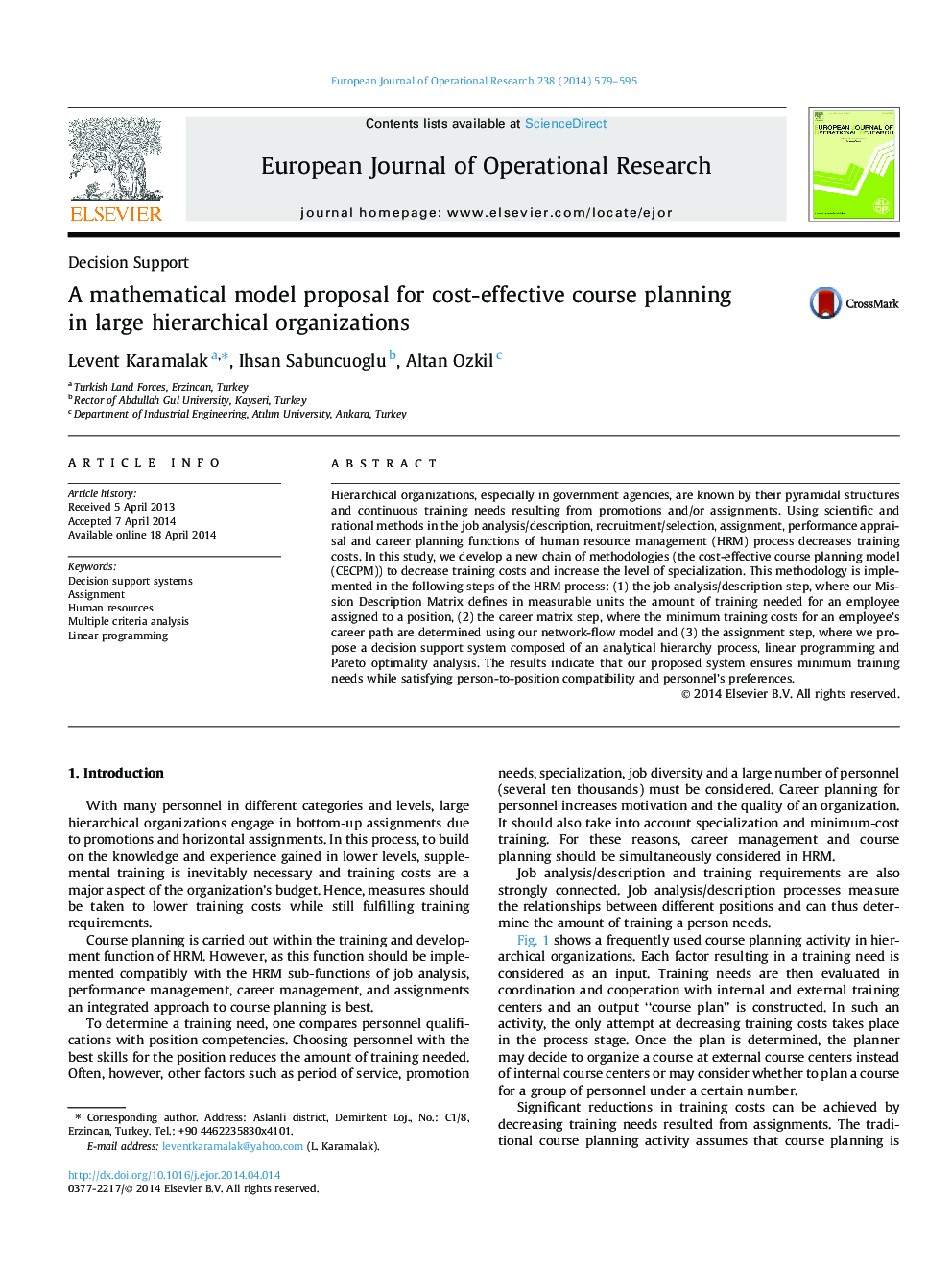| Article ID | Journal | Published Year | Pages | File Type |
|---|---|---|---|---|
| 478120 | European Journal of Operational Research | 2014 | 17 Pages |
•We develop the cost-effective course planning model to decrease training costs.•It defines the amount of training needed for an assigned employee.•It determines the minimum training costs for an employee’s career path.•It satisfies person-to-position compatibility and employee preferences.
Hierarchical organizations, especially in government agencies, are known by their pyramidal structures and continuous training needs resulting from promotions and/or assignments. Using scientific and rational methods in the job analysis/description, recruitment/selection, assignment, performance appraisal and career planning functions of human resource management (HRM) process decreases training costs. In this study, we develop a new chain of methodologies (the cost-effective course planning model (CECPM)) to decrease training costs and increase the level of specialization. This methodology is implemented in the following steps of the HRM process: (1) the job analysis/description step, where our Mission Description Matrix defines in measurable units the amount of training needed for an employee assigned to a position, (2) the career matrix step, where the minimum training costs for an employee’s career path are determined using our network-flow model and (3) the assignment step, where we propose a decision support system composed of an analytical hierarchy process, linear programming and Pareto optimality analysis. The results indicate that our proposed system ensures minimum training needs while satisfying person-to-position compatibility and personnel’s preferences.
